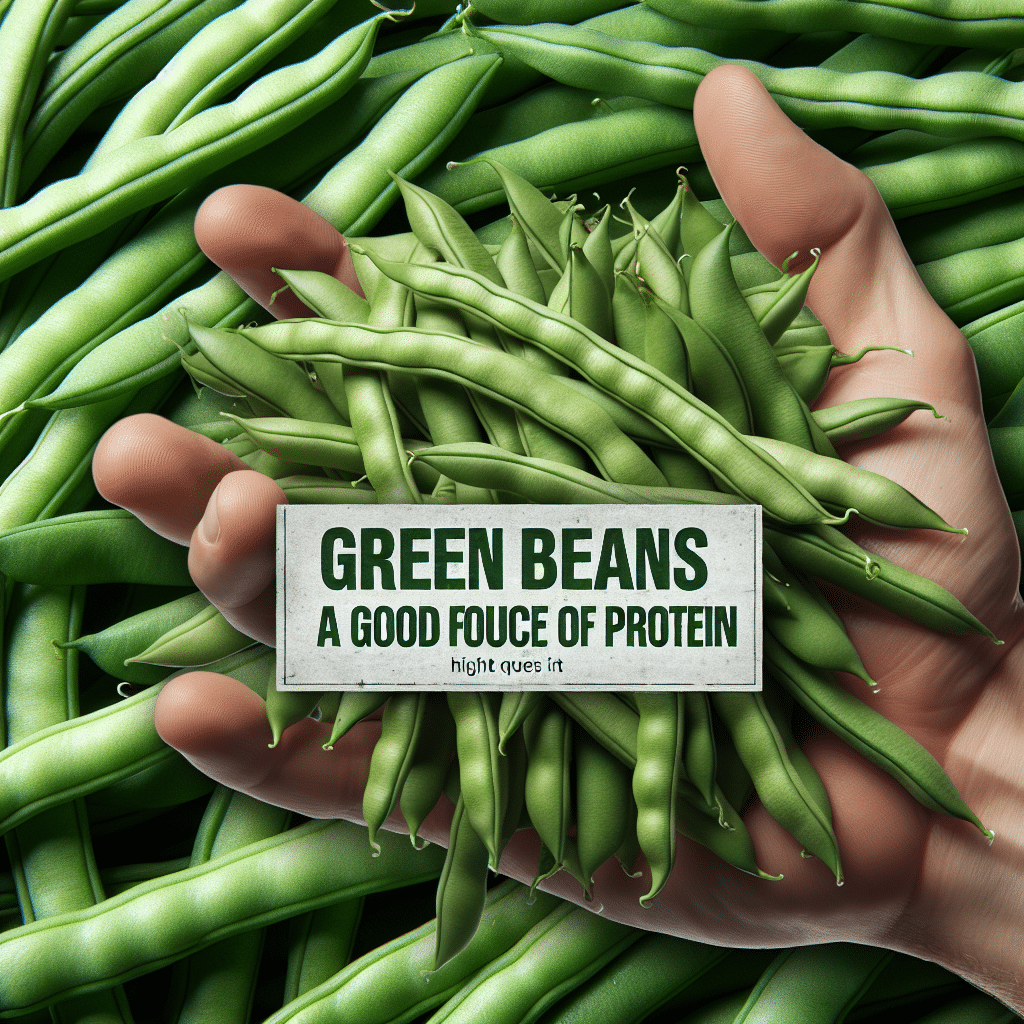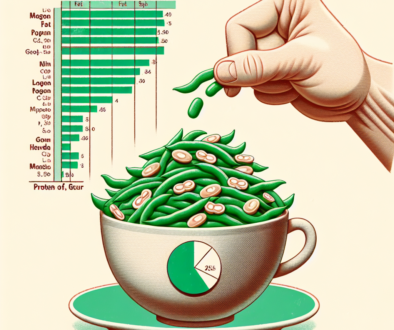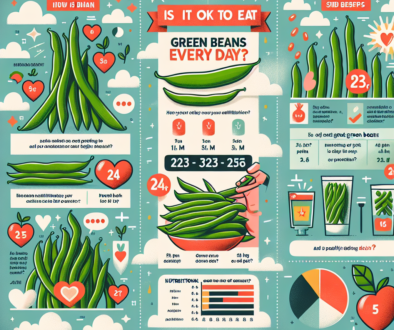Are Green Beans A Good Source Of Protein?
-
Table of Contents
- Green Beans as a Protein Source: A Comprehensive Analysis
- Understanding the Nutritional Value of Green Beans
- Protein Content in Green Beans
- Comparing Green Beans to Other Protein Sources
- Integrating Green Beans into a High-Protein Diet
- Case Studies and Research on Protein in Plant-Based Diets
- Conclusion: The Role of Green Beans in Protein Consumption
- Discover ETprotein’s Range of High-Quality Protein Products
Green Beans as a Protein Source: A Comprehensive Analysis

When it comes to plant-based nutrition, green beans are often celebrated for their versatility and nutrient content. However, the question of whether green beans are a good source of protein is one that requires a deeper dive into their nutritional profile. In this article, we will explore the protein content of green beans, compare them with other protein sources, and discuss their role in a balanced diet.
Understanding the Nutritional Value of Green Beans
Green beans, also known as string beans or snap beans, are a popular vegetable that belongs to the legume family. They are commonly consumed across the globe and are known for their crisp texture and green hue. But beyond their culinary appeal, green beans offer a range of nutritional benefits.
- Rich in vitamins: Green beans are an excellent source of vitamins A, C, and K, as well as folate.
- Mineral content: They contain essential minerals such as iron, calcium, magnesium, and potassium.
- Dietary fiber: Green beans are high in fiber, which is beneficial for digestive health.
- Low in calories: They are low in calories, making them a great addition to weight management diets.
Protein Content in Green Beans
When it comes to protein, green beans provide a modest amount. On average, one cup of cooked green beans contains about 2 grams of protein. While this is not a high amount compared to other protein sources, it is important to consider the role that green beans can play in contributing to the overall protein intake, especially in a plant-based diet.
Comparing Green Beans to Other Protein Sources
To put the protein content of green beans into perspective, it’s helpful to compare them with other common protein sources:
- Animal-based proteins: Chicken, beef, and fish are high in protein, with a single serving providing upwards of 20 grams.
- Legumes: Other members of the legume family, such as lentils and chickpeas, offer more protein, with about 18 grams per cup when cooked.
- Nuts and seeds: Almonds, peanuts, and pumpkin seeds are also higher in protein, ranging from 7 to 28 grams per serving.
- Dairy: Milk, cheese, and yogurt are rich in protein, with a cup of milk providing 8 grams.
While green beans may not be a protein powerhouse, they can still contribute to your daily protein needs, especially when combined with other protein-rich foods.
Integrating Green Beans into a High-Protein Diet
For those looking to increase their protein intake, green beans can be part of a strategic approach to diet. Here are some ways to incorporate green beans into a high-protein meal plan:
- Pair green beans with quinoa or brown rice to create a complete protein with all essential amino acids.
- Add green beans to salads that include chickpeas, black beans, or tofu for an extra protein boost.
- Combine green beans with nuts and seeds in stir-fries or as part of a vegetable medley.
- Use green beans as a side dish to complement main courses that are high in protein, such as grilled chicken or fish.
Case Studies and Research on Protein in Plant-Based Diets
Research has shown that plant-based diets can provide adequate protein when a variety of foods are consumed. For example, a study published in the American Journal of Clinical Nutrition found that vegetarian diets can meet protein requirements as long as a diversity of plant foods is eaten and energy needs are met.
Another study in the Journal of the Academy of Nutrition and Dietetics highlighted the importance of including a variety of protein sources in a vegetarian diet to ensure all essential amino acids are consumed. Green beans, along with other vegetables, legumes, grains, nuts, and seeds, were recommended as part of this varied diet.
Conclusion: The Role of Green Beans in Protein Consumption
In conclusion, while green beans are not the highest source of protein available, they can still play a valuable role in a balanced diet. Their protein content, combined with their rich array of other nutrients, makes them a healthy addition to any meal plan. By incorporating green beans with other protein-rich foods, individuals can enjoy a diverse and nutritious diet that supports their protein needs.
Discover ETprotein’s Range of High-Quality Protein Products
If you’re looking to supplement your diet with additional protein sources, ETprotein offers a variety of organic bulk vegan proteins that can complement your intake. Their products, including rice protein, pea protein, and various seed proteins, are characterized by a neutral taste and non-GMO, allergen-free attributes. With L-(+)-Ergothioneine purity over 98%, ETprotein caters to a diverse range of industries and dietary preferences.
Whether you’re involved in sports nutrition, weight management, or simply seeking to enhance your overall health and wellness, ETprotein’s products provide comprehensive solutions to meet all your protein needs. Contact ETprotein to sample their high-quality protein offerings and elevate your nutritional regimen.
About ETprotein:
ETprotein, a reputable protein and L-(+)-Ergothioneine (EGT) Chinese factory manufacturer and supplier, is renowned for producing, stocking, exporting, and delivering the highest quality organic bulk vegan proteins and L-(+)-Ergothioneine. They include Organic rice protein, clear rice protein, pea protein, clear pea protein, watermelon seed protein, pumpkin seed protein, sunflower seed protein, mung bean protein, peanut protein, and L-(+)-Ergothioneine EGT Pharmaceutical grade, L-(+)-Ergothioneine EGT food grade, L-(+)-Ergothioneine EGT cosmetic grade, L-(+)-Ergothioneine EGT reference grade and L-(+)-Ergothioneine EGT standard. Their offerings, characterized by a neutral taste, non-GMO, allergen-free attributes, with L-(+)-Ergothioneine purity over 98%, 99%, cater to a diverse range of industries. They serve nutraceutical, pharmaceutical, cosmeceutical, veterinary, as well as food and beverage finished product distributors, traders, and manufacturers across Europe, USA, Canada, Australia, Thailand, Japan, Korea, Brazil, and Chile, among others.
ETprotein specialization includes exporting and delivering tailor-made protein powder and finished nutritional supplements. Their extensive product range covers sectors like Food and Beverage, Sports Nutrition, Weight Management, Dietary Supplements, Health and Wellness Products, and Infant Formula, ensuring comprehensive solutions to meet all your protein needs.
As a trusted company by leading global food and beverage brands and Fortune 500 companies, ETprotein reinforces China’s reputation in the global arena. For more information or to sample their products, please contact them and email sales(at)ETprotein.com today.














